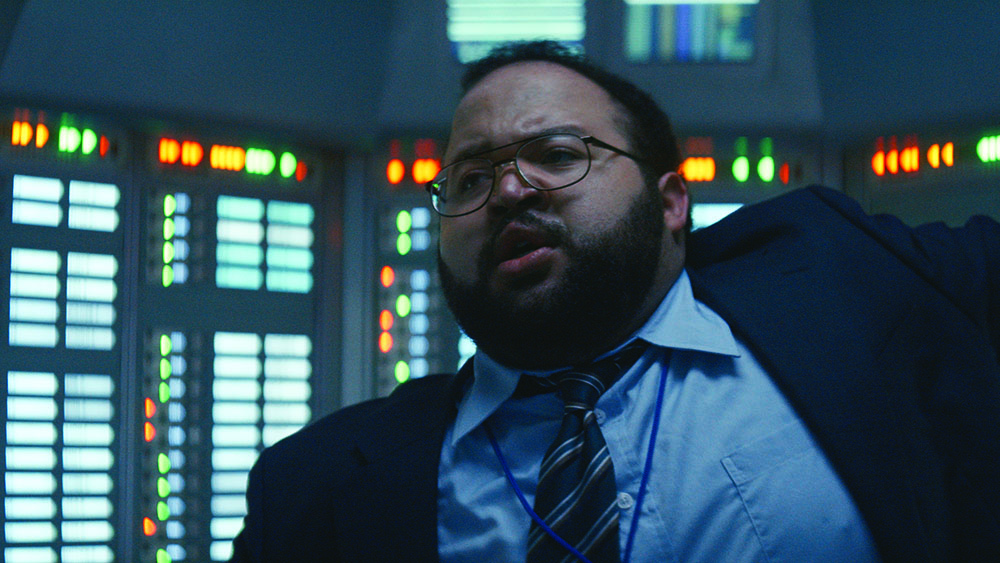
Courtesy of AppleTV+

Apple TV+’s thriller Severance is centered on a fictional company that offers employees a “severance” procedure through which their memories are surgically separated between their work and home life — meaning that when in one state, there’s no recollection of the other. Lumon Industries claims this offers a work-life balance, or a way to recover from personal trauma. But not remembering does nothing to alter an unsettling reality in either state, nor can it mitigate abuse by the employer.
Establishing the disparate lives of manager Mark Scout (Adam Scott) in his “innie” (work) state and “outtie” (nonwork) state — where he is processing the death of his wife — was central to the series, which is nominated for 14 Emmys, including two for editing.
“At the beginning of the series there’s much more separation between the transitions from the innie to outtie world, so that the viewer can get oriented with this transition,” explains editor Geoffrey Richman, who is double-nominated for the episodes “In Perpetuity,” shared with editor Erica Freed Marker, and “The We We Are.” Earlier in the season, “we spend a lot of time focusing on all the mechanics of [the innie] going to the elevator, what happens in the elevator, the change that occurs, following the outtie home and seeing how it’s a different world, dwelling on the separation between innie and outtie. As we got further and further into the episodes, we started playing more with melding those two together.”
Once the viewer presumably understands the rules of the severed memories, the editors could experiment more in the cutting room. “In many cases [the transitions] were actually shot, but we would create leaps in the edit so that there was more of a juxtaposition, from an outtie Mark to an innie Mark, or vice versa. As their stories started to develop, there were parallels in what they were experiencing,” Richman says. “By removing the transitional actions, it highlighted those parallels, like looking at the phone and looking at the map.”
They also did some restructuring, for instance, by moving some scenes into earlier or later episodes “in order to make sure that [relevant information] that we were dropping early on was close enough that by the time we go back to it, you remember it.
“As we got closer and closer to the end of the season, we went the other way, because once the audience is so attuned to what’s going on … then we can go more nuts and just start intercutting things a lot more frenetically, and the audience follows it.”
The edit also enhances the unsettling nature of Lumon. Marker shares a favorite scene in the “In Perpetuity” episode, during which Helly (Britt Lower), the newest severed employee in the Macrodata Refinement department, tries desperately to escape Lumon, running through the seemingly endless hallways. Mark tries to reach her before floor supervisor Milchick (Tramell Tillman) can. Then the momentum changes to a quiet but disturbing scene in the “break room.” Milchick forces Helly to repeatedly read a compunction statement. “Milchick as a character changes from being this kind of support staff to really like the henchman who’s going to come after and hurt these people, who it seemed like he was there to help and protect,” says Marker. “Helly was just heartbreakingly trying to convince him not to make her participate in this.”
Adding that “the cast was really great,” she notes that the actors, working with director Ben Stiller, varied their performances in different takes. “The tricky part was, which direction do we want to take this? And how far do we want to calibrate it toward really evil, and how much do we want to pull back?”
The foursome of employees on the severed floor eventually team up, and in the season’s last episode (“The We We Are”), Dylan (Zach Cherry) sneaks away to trigger an overtime contingency that activates the innies of Mark, Helly and Irving (John Turturro) in the outside world, leading to a riveting finale.

Courtesy of AppleTV+
“With every pass of the edit, we were breaking scenes down into smaller and smaller beats,” Richman says. “So by the time we got to the end of the episode, we had found a rhythm, keeping the tension, going back and forth between characters a lot more quickly. By the end, we were free to go to the wall with intercutting. We had so many different ingredients in play, like all the different characters in each of the places that they were at, plus the music, plus the dialogue.”
He continues, “There was a lot of trial and error, moving things around to find the right sequence of shots on top of that faster pace.” In the final moments, Milchick enters the room and tackles Dylan, who releases the levers of the system, returning Mark, Helly and Irving to their outtie states and leaving multiple cliffhangers.
(Spoiler alert!) “We actually intercut Mark yelling ‘She’s alive!’ [as his innie has a last-moment revelation about his outtie’s believed-to-be-dead wife] with the tackle. So it’s like these two shots are happening simultaneously, not intercut, because it’s flashing so fast between the two that you get the final moment of the tackle plus Mark’s face with ‘She’s alive.’ “
This story first appeared in an August stand-alone issue of The Hollywood Reporter magazine.